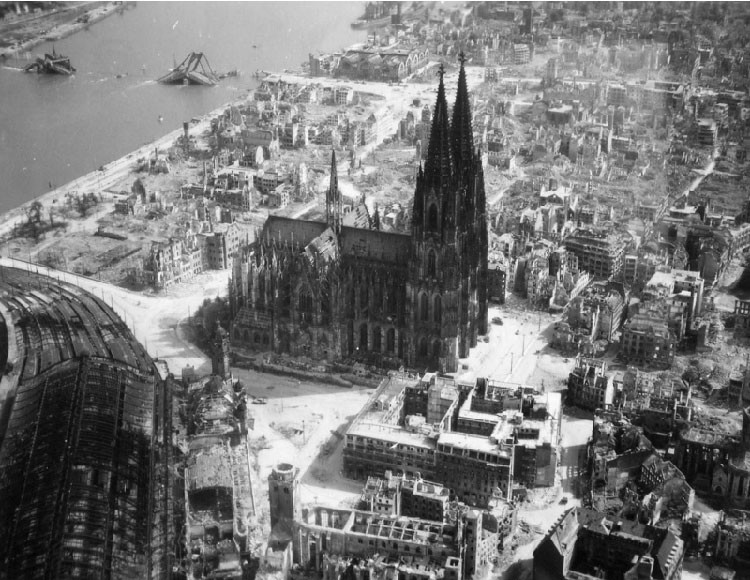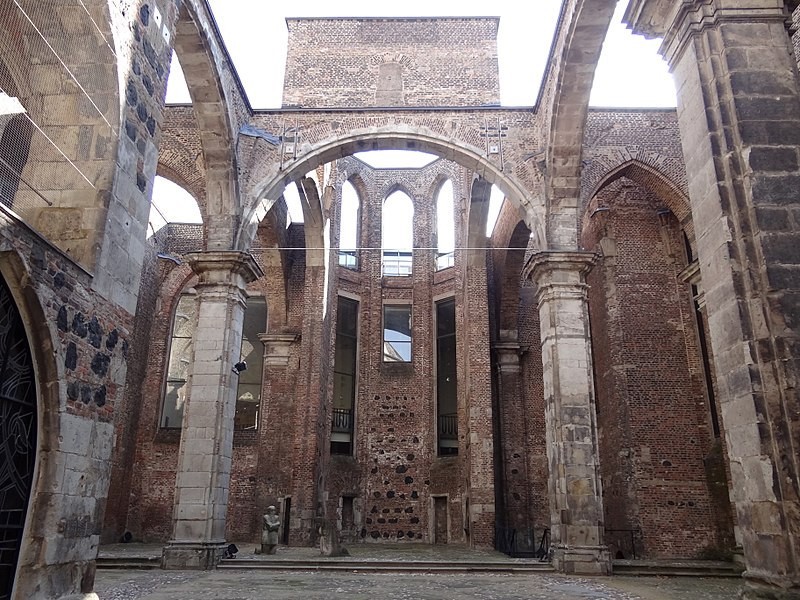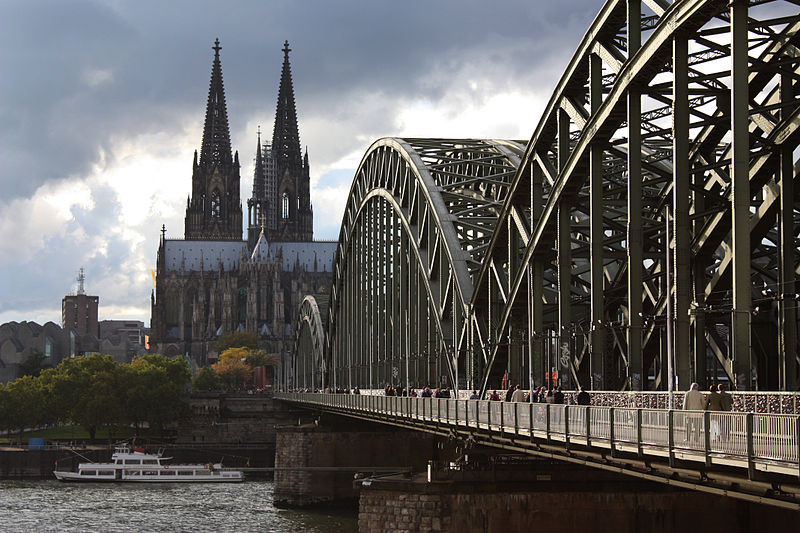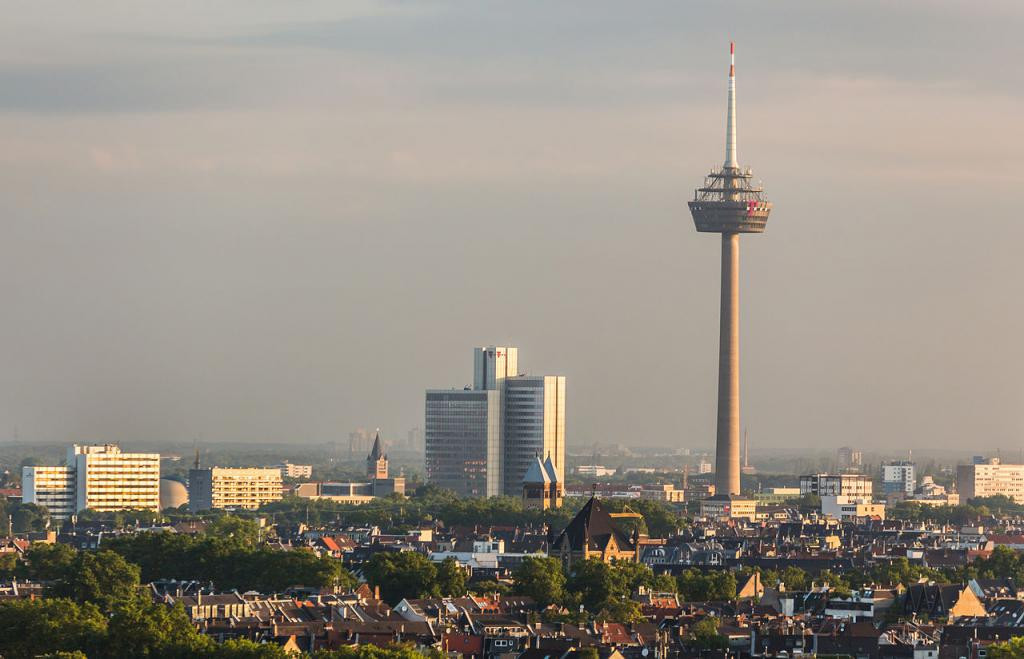Since the beginning of the full-scale invasion, russia has destroyed hundreds of Ukrainian cities and towns. Some of them have been completely razed to the ground. The destruction of the housing stock and infrastructure amounts to than 80%.
The global practice included cases when there was almost nothing left of cities because of constant bombings and hostilities. However, they were still restored and “rose from the ashes.” One such example is the German city of Cologne.
The “Transparent Cities” program (Transparency International Ukraine) continues covering world experience of city reconstruction. How was the German Cologne revived and returned to its historical appearance? Read our material.
Cologne is a city with an incredible character and an interesting history
Cologne is one of the oldest cities in Germany, dating back to the Roman Empire. The name of the city means “colony.” In addition to other historical monuments, the city is globally famous for its Cologne Cathedral. It was built for over 600 years. The height of the two towers is 157 meters. It is one of the largest churches in the world, and there was a time when it was the tallest building on the planet.
During WWII, the city was almost destroyed. It was bombed 262 times, a kind of anti-record. The longest bombing lasted 75 minutes, and 1,046 bombers took part in it.
In one night, more than 5,000 buildings were destroyed in Cologne, about 500 people died, and more than 45,000 lost their homes.
 The ruined center of Cologne © rarehistoricalphotos.com
The ruined center of Cologne © rarehistoricalphotos.com
Urban planning expert Rudolf Schwarz called Cologne “the biggest pile of rubble in the world.” Indeed, over 12,000 buildings were damaged during the war, including ancient Romanesque and Gothic churches. 19 bombs were dropped on the Cologne Cathedral, which is the historical landmark of the city. However, the building survived and remained almost in its original form.
By the end of the war, only 40,000 of the city's population of 700,000 remained. Since the Nazis controlled Cologne even before 1945 and were confident of their victory, the city immediately began clearing the rubble and planning for further reconstruction.
Residents, prisoners of war, and concentration camp inmates massively cleaned construction debris, which was partly a demonstrative phenomenon for Nazi propaganda.
Architects of the Third Reich drew up plans for German cities that included the expansion of streets and squares for rallies and demonstrations. The bombing, as thought, should have made reconstruction “Hitler-style” easier, but things didn't turn out as expected. After the war, mass “denazification” began, due to which both Cologne and other cities abandoned the ideas of Nazi architects.
How was Cologne rebuilt after World War II?
A new reconstruction plan was developed in 1946 by the architect and town planner Rudolph Schwartz, who was appointed head of the Reconstruction Office. The entire reconstruction depended solely on the residents and the local authorities because until 1948, Germany did not have a central government. With the support of the authorities, exhibitions and public meetings were held, where the issue of rebuilding every part of Cologne was resolved.
They decided to recreate the almost destroyed city in detail to its pre-war appearance. The historical center and almost all churches were rebuilt “brick by brick” according to old plans and photographs. Moreover, the lion's share of finances for the restoration of churches came from the parishioners.
 Ruins of St. Alban's Church © Wikimedia Commons
Ruins of St. Alban's Church © Wikimedia Commons
To ensure reliable connections between the western and eastern parts of the city, 5 bridges were built across the Rhine River. One of them is the legendary Hohenzollern railway and pedestrian bridge; only its destroyed metal foundations remained intact after the bombings.
Of course, the architects considered the future motorization and commercial needs of the city. Three car rings were laid around the center, and two streets leading to the other side of the river were widened. This made it possible to protect the central part of the city from noise and fumes. In particular, the two most touristic streets, Hohe Strasse and Schildergasse, became completely pedestrianized.
 View of Cologne Cathedral from the Hohenzollern Bridge © Wikimedia Commons
View of Cologne Cathedral from the Hohenzollern Bridge © Wikimedia Commons
Ecology in Cologne is at a high level, and this is even though the city is considered a large center of the chemical and automotive industries. In place of old fortifications that protected the center of Cologne, a whole “green belt” of parks is now blooming. The second such protective natural barrier is located on the southwestern outskirts of the city. As tourists note, evergreens throughout Cologne seem to make it warm even in the coldest months of winter.
Schwartz's plan could not be fully implemented due to a lack of funds. The gaps in the blocks were built up with modernist and reserved houses that fit well into the current urban style. Even despite the acute need for housing, these houses were not identical and gloomy, as in the USSR. Each building had its own small features — the color of the facade, special shapes, or decor.
The practice shows that the detailed recovery solution worked. The residents felt the return of stability in a troubled time — “everything in the city is almost the same as it was hundreds of years ago.” However, the city also turned out to be extremely open to new things — the urban canvas easily included modern projects. For example, the Colonius TV tower or the Central Mosque.
 Colonius TV tower © Wikimedia and Eckhard Henkel
Colonius TV tower © Wikimedia and Eckhard Henkel
Instead of conclusions
Cologne is a city that was restored from ruins and returned to its pre-war appearance. As you can see, even with more than 80% destruction, it preserved and increased its assets. Now, it is the fourth most populous German city, which is flourishing and developing.
Ukraine should pay special attention to the cities that Russia destroyed almost completely. When restoring them, it is necessary to consider the historical basis of the city, and its pre-war appearance, to plan reconstruction taking into account the opinions of residents and experts.
Although the post-war reconstruction officially ended in the 1990s, its rules are still in effect. The city does not stand still and continues to develop, maintaining a window for dialogue between the past and the present.